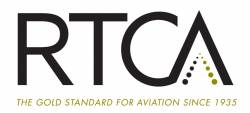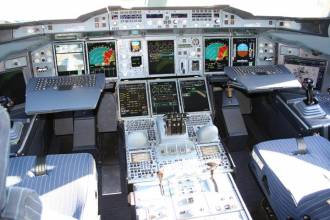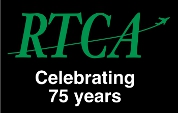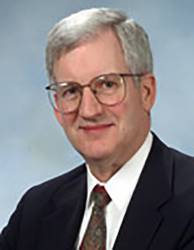
Federal aviation officials have asked the RTCA, Inc., standards organization to comment on a plan designed to help prevent a proposed wireless broadband network from interfering with the certified GPS receivers used by aircraft.
Federal aviation officials have asked the RTCA, Inc., standards organization to comment on a plan designed to help prevent a proposed wireless broadband network from interfering with the certified GPS receivers used by aircraft.
That network, which is being pursued by the Virginia-based firm Ligado Networks, would use frequencies near those in which GPS (and other GNSS) signals are broadcast. Testing showed in 2011 that the ground-based network as originally proposed by Ligado’s predecessor organization, LightSquared, would overload a wide range of GPS receivers. Ligado has since submitted a modified plan to the Federal Communications Commission (FCC), which reduces signal power and foregoes using a particularly problematic 10-megahertz slice of spectrum closest to the GPS band.
In its June 6 filing under FCC Docket 11-109, the company also said it would defer to the Federal Aviation Administration (FAA) on the limits needed in its downlink band to protect certified receivers:
Ligado would protect certified aviation devices by lowering the power of its terrestrial network operations in the 1526-1536 MHz band on a nationwide basis as necessary in deference to current and any future Minimum Operational Performance Standards (“MOPS”) insofar as they are incorporated into active Technical Standard Orders (“TSOs”) by the FAA and the industry-led RTCA Inc. (“RTCA”). The Modification Applications request that the Commission make adherence to these standards a condition of Ligado’s licenses. Ligado’s proposal does not ask the FAA to mandate any changes in the equipment used by airlines or others in the aviation community. Nor, contrary to the potential misunderstanding of some commenters, does Ligado suggest that the FAA should establish some sort of special TSO governing Ligado’s equipment.
RTCA Inc. is a nonprofit association that coordinates volunteers developing consensus-based technical standards. In October the FAA ask the group to comment on this aspect of Ligado’s proposal, being careful in the process not to put its thumb on the scale.
"The FAA has yet to take a position on the proposed approach," Ken Alexander told the October 21 plenary of Special Committee 159 (SC-159), which is tackling the request. Alexander, who is FAA’s chief scientific technical advisor for satellite navigation systems and the committee’s designated federal official, read from a prepared statement.
The Ligado Networks proposal is largely based on the FAA’s assessment of the LightSquared proposal in 2011 and proposes to determine a site-by-site peak power output that will ensure GPS reception for aircraft using certified avionics when they are operating 250 feet or more laterally or 30 feet or more above a Ligado transmitter antenna
Ligado is relying on use cases involving helicopters rather than fixed-wing aircraft. Looking at real-world use cases makes it possible to establish a more realistic minimum distance from a Ligado transmit antenna for safe helicopter operations, based on an FAA authorized technical standard order (TSO) guarantee of performance of certified GPS equipment, the company believes.
Rotorcraft present some of the most difficult cases, Ligado pointed out — they are allowed, for example, to fly quite close to obstacles as long as they do not create a hazard.
“Because they may operate in closer proximity to Ligado’s cell sites, focusing on rotorcraft use cases will result in the maximum reduction of Ligado EIRP [effective isotropic radiated power] from its 1526–1536 downlink channel in order to ensure compatibility with aviation standards,” the firm wrote
Using these distances, Ligado proposes first modeling the appropriate power level for each individual cell site to avoid interference, then looking at those levels for multiple cell sites as a group, taking into account things such as safety margins, antenna height, and the aircraft’s bank angle. This is to address the likelihood that GPS receivers could be impacted by transmissions from more than one Ligado source at the same time.
UAS a Factor
This work is part of the FAA’s support for the ongoing Department of Transportation (DoT)-led activity to understand power levels that can be tolerated in the adjacent radiofrequency bands for all civil GNSS receivers, according to the statement. This includes “non-certified aviation receivers of interest to the FAA, but outside the scope of the enclosed analyses and this request for comment.”
One of the fastest growing sectors using non-certified aviation receivers is the unmanned aerial system (UAS) industry. The FAA is predicting some 1.3 million U.S. UAS pilots will be licensed by 2020. Moreover, as of mid-September — less than a month after the new Part 107 rules for operating U.S. UAS aircraft commercially took effect — some 2,000 drones were being registered with the agency daily. Although Part 107 does not require unmanned aircraft weighing 55 pounds or less to be GPS equipped, many, if not most, carry GPS receivers.
"Just about anything [any UAS] that’s over a couple of hundred bucks is going to use GPS in one way, shape, or form," said retired Maj. Gen. James Poss, the CEO of ISR Ideas and the former executive director of the ASSURE FAA UAS Center of Excellence Team.
DoT will continue to review for potential impacts to noncertified equipment and their effects on aviation, in the context of other non-certified receivers across many other civil applications,” according to an agency statement, which was sent in response to a query from Inside GNSS.
The FAA made clear it was not looking for feedback from SC-159 on noncertified aviation equipment but noted the importance of such equipment
“If RTCA has feedback on non-certified avionics,” the FAA wrote, “then while we are interested, that feedback would be better directed at the larger DoT adjacent-band compatibility activity and we await the completion of the Department’s activities.”
SC-159 expects to have a draft of its comments on the Ligado approach by the beginning of December.





